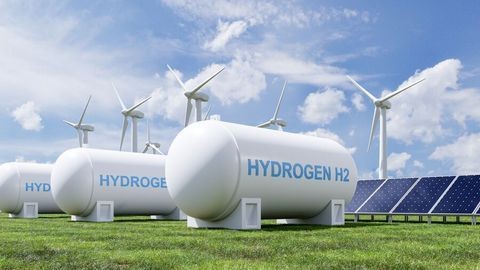FERC Transforms Participation of Distributed Energy Resources In Markets
Client Alert | 2 min read | 09.22.20
Distributed energy resources (DER) are often too small on their own to meet participation requirements of the energy and capacity markets of Regional Transmission Organizations (RTOs) and Independent System Operators (ISOs). To encourage greater DER participation, FERC's Order No. 2222 requires that RTOs/ISOs allow DER to participate in RTO/ISO markets through an aggregator that would register as the market participant. Importantly, Order No. 2222 turns the long-running debate over DER market participation from one of whether it should be done into one about how best to achieve it.
Order No. 2222 defines a DER as any resource located on the distribution system or behind a customer meter to include not only electric generators and storage devices, but also demand response, energy efficiency, thermal storage, and electric vehicles. It requires that RTOs/ISOs allow aggregators of one or more DER to participate in the energy, capacity and ancillary service markets. FERC emphasized the market and reliability benefits that DER bring, including that DER, because they can co-locate with load and have shorter development schedules, can provide a superior alternative to address congestion or reliability issues than new transmission or generation projects.
Order No. 2222 specifies technical parameters for DER participation, including a minimum size requirement for DER aggregations that does not exceed 100 kW, and allows each RTO/ISO to establish a maximum (but not a minimum) capacity limit for DER to participate through an aggregator. It also requires that RTO/ISO rules allow aggregators to combine multiple technologies within an aggregation, noting that this will enhance the ability of an aggregator to meet technical requirements such as minimum run times.
It rejected proposals that would broadly prohibit DER from also participating in retail distributed generation programs, allowing a DER to provide and be compensated for providing distinctly different services but also allowing RTO/ISOs to develop narrowly designed criteria to ensure that DER benefits are not double counted. FERC acknowledged that distribution utilities should have the opportunity to review planned aggregations to ensure they can safely and reliably operate, but required that RTO/ISOs develop a specific distribution utility review process to evaluate the ability of a DER to safely and reliably participate in an aggregation that is also transparent, provides specific review criteria, and provides a specific time for distribution utility review (not to exceed 60 days).
FERC rejected arguments that all types of DER participation in RTO/ISO markets be conditioned on state regulatory authorities consent, but did provide that customers of utilities that have distributed 4 million MWh or less in the previous year may not participate in the DER aggregation unless the relevant state regulatory authority consents to such participation.
DER aggregators making sales into the RTO/ISO markets will, in many cases, be considered public utilities subject to FERC’s Federal Power Act (“FPA”) jurisdiction; however, an individual DER’s participation in a DER aggregation would not cause that individual resource to become subject to FPA public utility regulation. In addition, FERC will not assert jurisdiction over DER interconnection to a distribution line as long as the DER will be participating in ISO/RTO markets through an aggregator.
Each RTO/ISO must make a compliance filing within 270 days after publication of Order No. 2222 in the Federal Register. Once the compliance filings are submitted, it may take many more months before an RTO/ISO is ready to implement the new rules.
Contacts
Insights
Client Alert | 2 min read | 12.19.25
GAO Cautions Agencies—Over-Redact at Your Own Peril
Bid protest practitioners in recent years have witnessed agencies’ increasing efforts to limit the production of documents and information in response to Government Accountability Office (GAO) bid protests—often will little pushback from GAO. This practice has underscored the notable difference in the scope of bid protest records before GAO versus the Court of Federal Claims. However, in Tiger Natural Gas, Inc., B-423744, Dec. 10, 2025, 2025 CPD ¶ __, GAO made clear that there are limits to the scope of redactions, and GAO will sustain a protest where there is insufficient evidence that the agency’s actions were reasonable.
Client Alert | 7 min read | 12.19.25
In Bid to Ban “Woke AI,” White House Imposes Transparency Requirements on Contractors
Client Alert | 5 min read | 12.19.25
Navigating California’s Evolving Microplastics Landscape in 2026
Client Alert | 19 min read | 12.18.25
2025 GAO Bid Protest Annual Report: Where Have All the Protests Gone?




